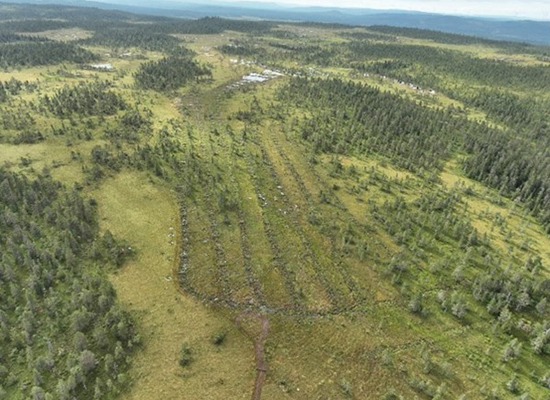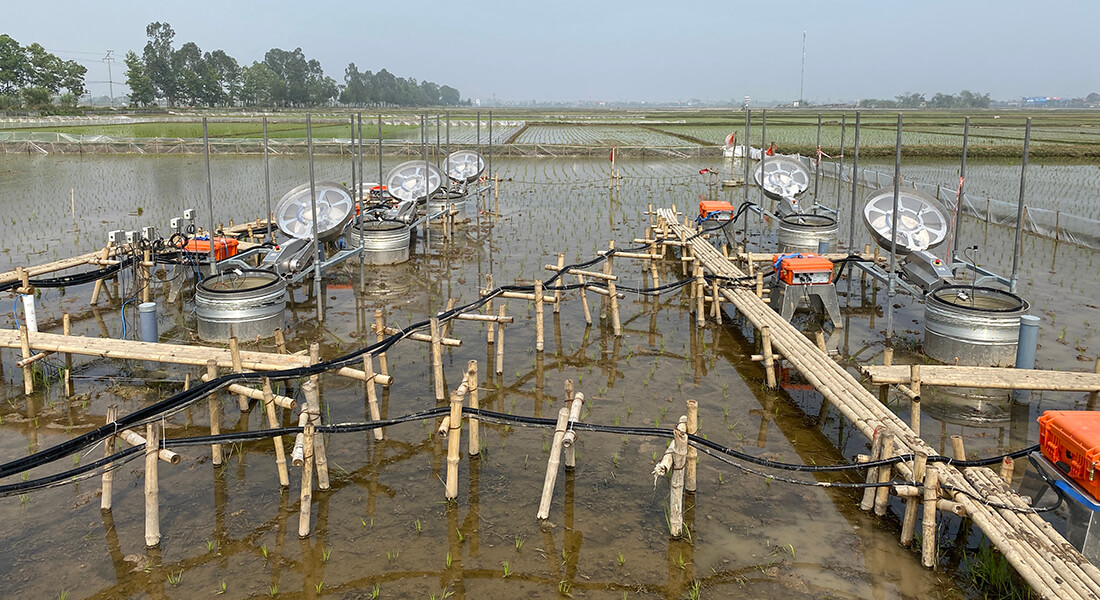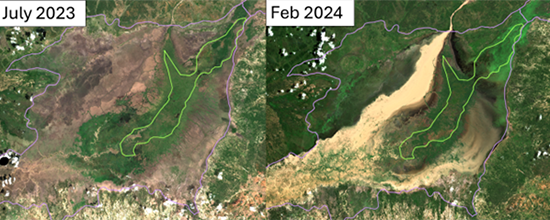Field sites
Trysil peatland rewetting site, Norway
The Global Wetland Center is involved in ongoing research activities in an experimental rewetting site in Trysil, Norway. The Trysil site consists of two neighbouring peatland areas, both drained some time between 1956 and 1975 for forestry purposes. Since one of the sites was rewetted in 2021, while the other remains drained and therefore serves as a control site, the Trysil site provides valuable insight into how a peatland responds during the first years after rewetting. At both sites, greenhouse gas (GHG) fluxes are being continuously measured at high temporal resolution with both an Eddy Covariance system and with automatic flux chambers. The GHG monitoring at the two sites began 2 years before one of the sites was rewetted, which provides quite unique before-and-after observations for understanding the effects of rewetting. Other variables being monitored at the sites include water table depth, soil depth-specific temperature, water content and gas diffusion, as well as water discharge in the outlet stream leaving the area.
The site GHG monitoring is funded by the Norwegian Environment Agency. The site is managed by Dansk Miljørådgivning A/S (DMR) with partners from University of Oslo, Technical University of Denmark, and University of Copenhagen.

Experimental field-site, Vietnam
Rice paddies are a major source of methane emissions globally, making them critical ecosystems for greenhouse gas research. The Global Wetland Center have set up research equipment to monitor greenhouse gas dynamics on a rice paddy in the Red River Delta, Vietnam. The site is located approximately 70 kilometers Southeast of Hanoi in an area dominated by rice paddies.
In this region, rice is grown twice per year, from January to June, and from June to October, with the remaining part of the year usually devoted to vegetables. The field has been selected due to excellent collaboration with local authorities and the expertise of local rice farmers. This enables both flexible and detailed experiments.
On the field we have set up six advanced greenhouse gas chambers and installed sensors to provide high frequency measurements on greenhouse gas fluxes as well as above- and below-ground variables such as soil oxygen levels and air humidity. The automatic high frequency measurements are supplemented with weekly measurements of plant available nutrients in the soil. The field experiment began in October 2024 and is expected to continue until at least July 2026. We aim to improve the understanding of greenhouse gas dynamics in rice-based agricultural systems to support sustainable farming and climate mitigation strategies.
All sampling and maintenance of the field equipment is performed by the Global Wetland Center in collaboration with the Institute for Agricultural Environment in Hanoi.

Vietnam field site
Usangu Wetlands, Tanzania
The Usangu Wetlands are a planned research activity site for the Global Wetland Center.
In 2026, the automated flux chambers currently active at the Vietnam site will be moved to Tanzania to continue collecting data there. These wetlands lie within a basin, where streams from the north and south highlands flow into the wetland, which then recharge the Great Ruaha River at its outlet. The wetlands play an important role in the water supply for its surrounding communities and for Tanzania’s power generation via two downstream hydroelectric plants, accounting for over 50% of the national power generation [Mtahiko et. al. 2006]. Despite this, cattle overgrazing and irrigation have resulted in dramatic changes to the hydrology of Usangu, and the once perennial Great Ruaha River has dried up completely in the low flow season each year since 1993 [Kiwele et al. 2012]. The permanent marsh at the center of Usangu wetlands, called Ihefu, has also dried completely for several years between 2000 and 2005 [Kiwele et. al. 2018].

Government focus on water management and wetland conservation has increased since their 2005 economic crisis due to hydroelectric power shortage. Since 2006, Ihefu has regained its constant flooded state, though the Great Ruaha remains seasonal. Although the hydrology of this wetland has been studied by many over the last decades, little research has been done to understand the carbon flux of these marshlands. Usangu was chosen as a Global Wetland Center study site in part due to the previous studies into the hydrology of the area, including studies done by GWC members at GEUS. In addition, the unique hydrology of Usangu and its importance for downstream water users provide even more reason to continue research in this area, so that we can better understand its changing hydrology and connection to the regional carbon budget.
In addition to the automatic chambers, we plan to install temporary water table depth stations and conduct field surveys on greenhouse gas fluxes and near surface concentrations. This fieldwork will be done in collaboration with DHI and University of Dar es Salaam.
